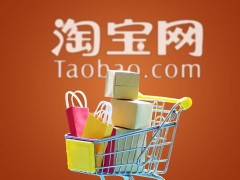How to set up system sorting on JD.com?
第一步:文本相关性;文本相关性即商品的文本描述信息(包括:商品标题、类目名称、品牌名、图书类商品还有作者、出版社等)和搜索关键词的是否相关或匹配。
第二步:类目;商品的所在类目(商品的分类)是否合理将影响到商品的排序结果。
第三步:商品人气,影响商品的销量,还影响消费者对该商品所属店铺的信任度和认可度。
第四步:平台风向标可以影响整个排名和物流,售后,还有评价和客服方面。
第五步:属性筛选规则 ,用属性筛选功能进一步缩小搜索意图,丰富、准确、体验好的属性筛选给消费者带来体验。
第六步:作弊行为评判标准,虚假交易,错放类目和属性,更换商品,标题乱填关键字等
第七步:重复铺货,店铺里完全相同以及商品的重要属性完全相同的商品,只允许发布一次,违反以上规则,即判定为重复铺货。
Professional answer
Step 1: Text relevance; text relevance refers to whether the text description information of the product (including: product title, category name, brand name, book products, authors, publishers, etc.) and the search keywords are relevant or matched.
Step 2: Category; whether the category (category of the product) to which the product belongs is reasonable will affect the sorting result of the product.
Step 3: Product popularity affects the sales volume of the product, and also affects the trust and recognition of consumers in the store to which the product belongs.
Step 4: The platform vane can affect the entire ranking and logistics, after-sales, as well as evaluation and customer service.
Step 5: Attribute filtering rules, use the attribute filtering function to further narrow the search intent, and bring rich, accurate and good experience to consumers.
Step 6: Criteria for judging cheating behaviors, including false transactions, misplacing categories and attributes, changing products, randomly filling in keywords in titles, etc.
Step 7: Repeated distribution. Products that are completely identical in the store and have completely identical important attributes are only allowed to be published once. Violation of the above rules will be considered as repeated distribution.
Similar Q&A
recommend What is the difference between JD Rising Star Program and New Star Program?
E-c News Continuously pushing e-commerce knowledge to you








Latest Q&A More
-
Do I need a trademark to open a franchise store on Pinduoduo to sell books?
#Pinduoduo#
-
How to withdraw from a Pinduoduo store
#Pinduoduo#
-
How to withdraw from Pinduoduo merchants
#Pinduoduo#
-
How to pay fees when closing a Pinduoduo store
#Pinduoduo#
-
How to withdraw from Pinduoduo
#Pinduoduo#
-
Which store on Pinduoduo is authentic?
#Pinduoduo#
-
Which stores on Pinduoduo can buy genuine products?
#Pinduoduo#
-
How to check the store under Pinduoduo
#Pinduoduo#
-
How to receive Pinduoduo online game products
#Pinduoduo#
-
How to sell the electronic version on Pinduoduo
#Pinduoduo#
E-c News 2025-12-09 04:35:03

- African netizens use China Africa cross-border e-commerce platform for online shopping
- how is the new seller of cross-border e-commerce doing?
- how can cross-border e-commerce Amazon sell on Amazon platform without goods?
- Amazon store opening process and cost analysis!
- Amazon plans to expand its pharmacy business on a large scale and will add same day delivery service
